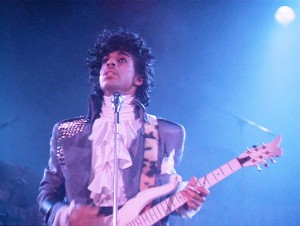I have been reading Sarah M. Allen’s Shifting Stories: History, Gossip, and Lore in Narratives from Tang Dynasty China. One of the main texts she is looking at is the Taiping Guangji (太平广记), a massive collection of …stuff… that was compiled in the Song Dynasty. I call it stuff because both Allen and Lu Xun saw this type of writing (小说) as, sort of, the beginning of Chinese fiction. The full collection, which has never been translated, consists of thousands of short bits of prose writing, some of which can be called gossip, some hagiography some tales of the weird, some historical anecdotes or, maybe, fiction. I liked the chapter on history “Filling the Gaps: Tales On and Against History.” Allen has some stuff on the “gossipy” stories that give a somewhat different take than you get in the Standard Histories. I call them “gossipy” because they really can’t be understood unless you already know who they are talking about and what the context is, which made even more difficult by the fact that it is impossible to date most of these.
I was taken by the account of the young Wang Wei. Although he was later to become a famously serious Buddhist, poet and landscape painter, as a youngster he first came to the attention of Prince Qi, and of the “eldest Princess” as a pipa player. Although the dates don’t really work out, there is speculation that this “eldest Princess” may be the Taiping Princess. She was the daughter of Empress Wu (yes, that Empress Wu) and among other things recommended lovers to her mom. Why claim that it was, perhaps, the Taiping Princess who was Wang’s patron? Well, in part because it makes a strong contrast with his later image. In the story (I think it is this one ) Wang was running around in a rather outré brocade coat(锦绣衣服,鲜华奇异) and playing music that make everyone dance (非一人不舞也). So something like this
This does not fit well with his later image, (although to be fair he seems to have become more serious later in life) and making his patron the Taiping Princess makes it even worse. Any powerful female in a Chinese historical account is likely to be suspected of outrageous sexual behavior, and this is triply true for someone like the Taiping Princess. It seems sort of implicit to me that the story is suggesting that Wang Wei slept his way to the top, or at the very least came to the attention of an older woman with a colorful reputation.
Why does this matter? Is this just a bit of nasty (and false) gossip spread by his enemies? A valuable (and true) account of how political and artistic patronage worked? Allen is primarily interested in connecting these tales to fiction,and especially in how these narratives became more fixed and became something to collect and edit rather than re-write.
As she suggests in her conclusion, however, they can also be connected to historical writing. An angle for further research is.
a more thorough exploration of the world of gossip of the eighth and ninth centuries…and its relationship with the formal historical record. The writers and historians of middle period China evidently saw anecdotal sources and formal history as existing on a continuum. p.274
Leopold von Ranke, the father of modern scientific history recounts that he was enamoured with the books of Sir Walter Scott as a young man. It was only later that he found out that they were not “really” history, but fiction, and he dedicated his life to drawing a sharp line between the two. Allen’s chapter spends a lot of time on stories of the Tang founding where there is a clear distinction between the Standard Histories and accounts she is reading, specifically on the issue of whether Gaozu or Taizong was the “real” founder of the Tang. This is an interesting enough question, but it seems to be mostly based on the distinction between official and unofficial histories. They are both the same type of stories, only one has official sanction and the other does not. The strong point of the book is how it examines all the things that xiaoshuo could be in the Tang, both agreeing with and going beyond Lu Xun. Unfortunately for us historians there is not as much history in here there could be. I don’t think that saying that “anecdotal sources and formal history exist[ed] on a continuum” is the best way of putting it. Just by calling them ‘sources’ you are putting them in a different category than ‘formal history.’ What is a better way of explaining it? Stay tuned for her next book! While you are waiting for the next book, however, this one is well worth reading.
